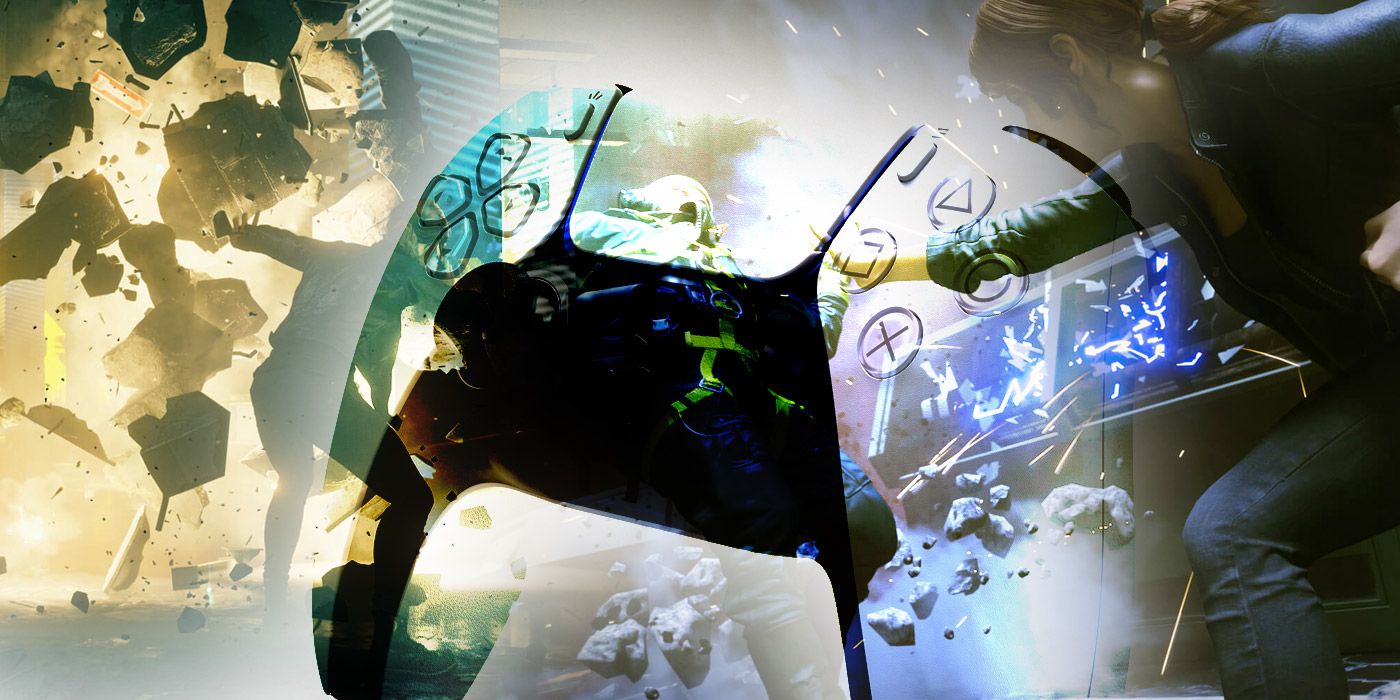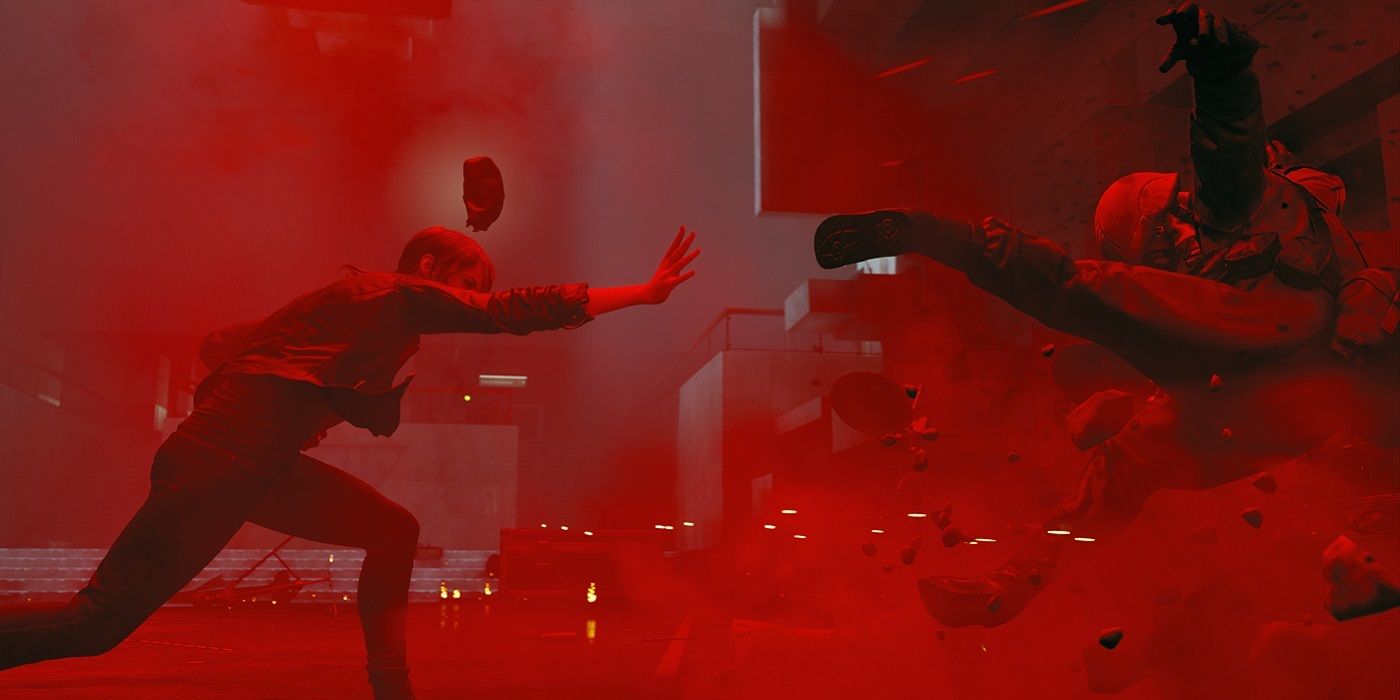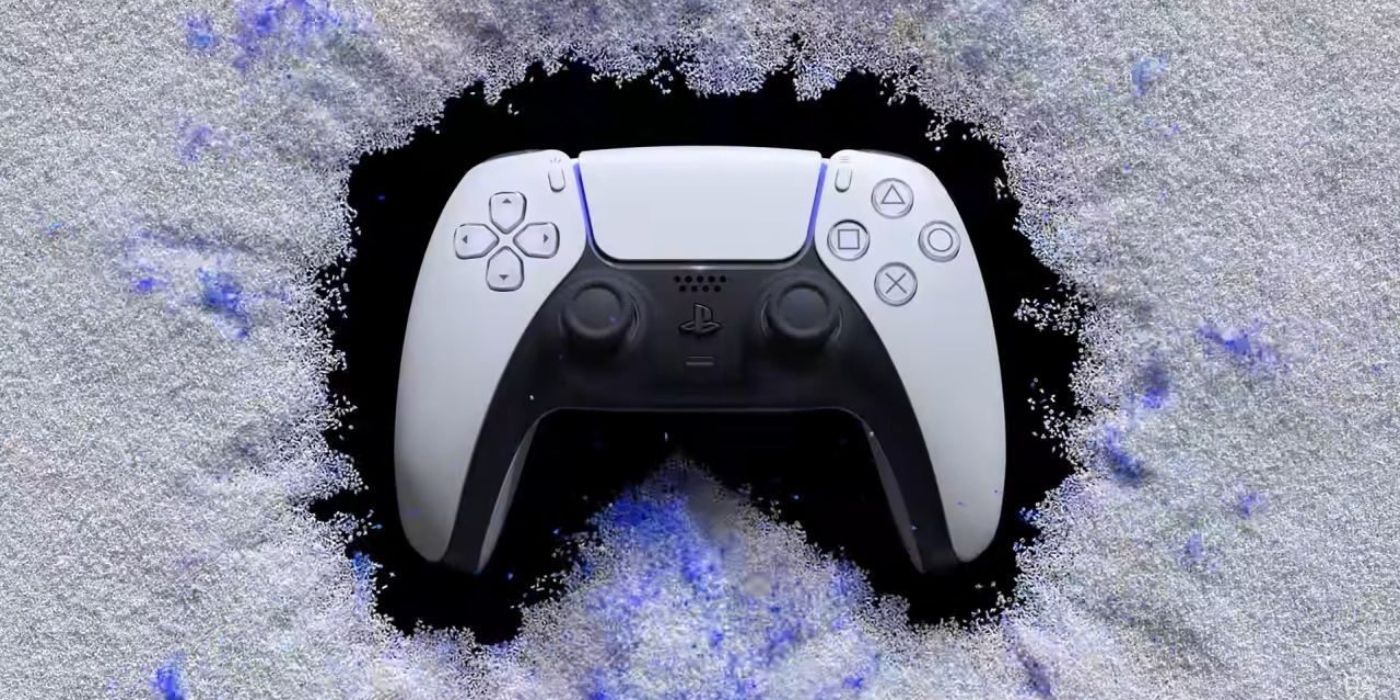Control is the Perfect Game for PS5's DualSense Features

The DualSense controller is home to many, if not most, of the innovations that set the PS5 apart from other consoles and gaming platforms. The unique features that the new controller provides push the boundaries of what gamepads are capable of, not just acting as a way to input commands but also giving a level of tactile feedback that can completely change the gameplay experience. Some of the best games from recent years could be improved even further if they were updated to support DualSense features, and 2019's Control is a perfect example.
Control was pegged by many to win Game of the Year at the Game Awards in 2019, but lost out to Sekiro in the end. Still, Control could have easily taken the top spot with its gripping, mysterious story, mind-bending art direction and puzzles, beautifully intense action, and use of next-gen ray-tracing tech that still makes it a benchmark for high-end graphics cards over a year after release. Control will be getting a next-gen refresh this year, and many are hoping DualSense features will be included. With the addition of DualSense features, Control would only elevate the impact of its combat, the tactile sensation of its powers, and the variety of its environments.

One of the features that makes Control's combat feel so visceral is the environmental destruction. Many games make use of a physics engine that allows for some destruction and debris to fly around in the heat of action, but few manage to make it so impressive. During fights, desks, chairs, file cabinets, and office paraphernalia are sent crashing through panes of glass, chunks of concrete shatter and scar the walls, and every room is left looking like a bomb went off when the dust settles. It's visually impressive, but DualSense features could easily add to the chaos.
The crunch of broken glass under the protagonist's feet, the whump of heavy objects sailing into enemies at high speed, and the crack of firing off the Service Weapon would all have more impact with the DualSense's unique capabilities. In the moment, every strike and collision would be weightier, and after the fact the rubble and destruction would all have a tactile feel as well. Nothing feels quite as good as tearing up a section of the bureau's offices, and better haptic feedback would add to the sensation of running through a blasted environment.

The most potential for the DualSense's use in Control would be in the way that all the varied powers and abilities feel to use. For one, the launch ability already feels fantastic to use, but could easily be even better with different vibrations to inform the player of the type of object they are about to hurl into the fray. Adaptive triggers would also give the Service Weapon's many forms a unique feel, while powers like Shield, Melee, Evade, and Ground Slam are all ripe for tactile elements as well. And, of course, flying around to traverse all the varied environments of the game would be its own treat too.
In many ways, Control's supernatural powers are a better depiction of telekinetic, force-like abilities than even most Star Wars games can manage. Currently, they blend sound design and visual cues to make the powers feel as visceral as possible, but extra haptic feedback can go beyond just making abilities feel impressive. Much as driving games use controller vibration to tell players when their car is reaching the limits of grip, detailed haptic feedback through the DualSense controller can give a lot more information about the abilities players fire off during combat too.
Because Control's action is so chaotic, the extra information provided by truly advanced physical feedback might even be a lifesaver in intense fights. The visual information onscreen can become overwhelmed with flying debris, exploding enemies, particle effects, and so on, but the extra cues given by rumblings from the controller and resistance on the triggers can let players focus on the action at hand rather than glancing over at meters and icons. The true potential of the DualSense controller is in how it provides not just immersion, but also game-changing information to players, and Control has a wealth of powers and abilities that could demonstrate why.

The other reasons that DualSense features would be perfect for Control are not tied to gameplay itself, but to the role of the game in general. When it came out, Control had some of the most advanced graphics and ray-tracing options of any title, and that's still true for the most part. It is one of the few games that uses nearly every feature that ray-tracing tech has to offer, even if its DLSS is not as advanced as more recent titles. It's still used as a benchmark for ray-tracing performance, so it only makes sense that it should also support further tech advancements in gaming.
Ray-tracing may be the biggest leap forward in PC gaming, but while the newest generation of consoles support ray-tracing tech, the biggest improvements in this generation are arguably seen in the DualSense controller. As always, the things that sets consoles apart are their features and ease of use, and it only makes sense for Control to keep up to date with big leaps in tech. Now that Control's DLCs are released, it could easily stay relevant on next gen consoles with a graphical overhaul and the addition of DualSense features, especially now that Microsoft may be considering adding DualSense-like features to new Xbox controllers.
Control is out now on PC, PS4, Switch, and Xbox One, with PlayStation 5 and Xbox Series X ports slated to arrive on February 2, 2021.

Post a Comment